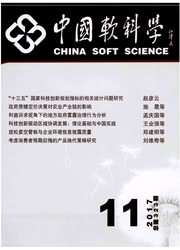

 中文摘要:
中文摘要:
鉴于现代社会发展对能源消费依赖程度日益提高,认识和把握国家能源消费行为规律及其变化趋势已经成为社会能源节约的基本前提。本文通过结构演进一能源消费和结构演进一单位能耗两个模型,对美国、英国、法国、德国、日本和印度产业结构演进和能源消费情况进行了国际比较。分析的结果表明,在现代化建设初期,二产为主的结构演进对国家能源消费需求产生了明显的增速效应;随着多元化进程的不断加快.产业结构的能源消费需求的减速作用开始逐步显现,从而形成由升到降的倒“U”型曲线变化形态。作为世界重要的能源生产和消费国,中国在长期一边倒的部门发展政策影响下,刚性演进特征极大地制约了国家产业结构节能效应的发挥,单位GDP能耗居高不下。
 英文摘要:
英文摘要:
Along with the modern society development' s reliance on energy consumption increasing gradually, the study and assurance of country energy consumption law and their changing trend already becomes the fundamental premise that society sources of energy savings. According to the structure evolution - energy consumption and structure evolution - unit energy consumption two models, the paper compares USA, United Kingdom, France, Germany, Japan and India, which shows that in modernized construction initial stage, the secondary industry has increased creation to the energy consumer demand obviously. The "reduce the speed" effect has just begun to appear because of diversify of the industries. As a result, the inverted "U" type curve has been also taken form by this effect, which describes the unit energy consumption of every GDP. As the second largest energy consumer in the world, China shows the same law. But it' s regretful that the structure energy - saving in China is not satisfying and unit GDP energy consumption sticks at a high level. Therefore, this paper has suggested that structure energy -saving, country wealth pattern adjustment and energy statistic should be paid more attention to.
 同期刊论文项目
同期刊论文项目
 同项目期刊论文
同项目期刊论文
 期刊信息
期刊信息
